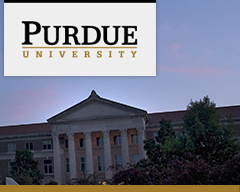Nanomaterials offer a broad range of properties that can differ dramatically from their bulk counterparts. Many of these properties are potentially attractive for biomedical applications, from biosensing, to tissue engineering, to drug delivery, to photothermal therapy. At the heart of these applications is a harnessing of the basic engineering sciences to image, design, synthesize, and manipulate nanomatierials. This symposium aims to bring together experts across the range of engineering science disciplines to discuss the state-of-the-art in development of functional and biologically inspired nanomaterials for biomedical applications. The symposium will highlight challenges spanning from design of novel nanobiomaterials, to fabrication, to implantation and delivery. Computational and analytical challenges will be a special focus. Topics will include:
- Design, analysis, and applications of functional biomaterials
- Cell-nanomaterial interactions
- Self-assembly
- Simulation of nanomaterials for biomedical applications
- Nanomaterials for tissue engineering and regenerative medicine
- Nanoparticles as drug delivery carriers
- Biomimetic nanomaterials
Subscribe to RSS Feed (Opens in New Window)
|
3D Bioprinting of functionalized graphene nanoplatelet-doped hydrogel for neural regeneration Christopher O’Brien, The George Washington University, United States |
|
|
Ben Holmes, The George Washington University, United States |
|
|
Cold atmospheric plasma modified nanocomposite cartilage scaffold Wei Zhu, The George Washington University, United States |
|
|
Endocytosis of PEGylated nanoparticles: what is the role of grafted polyethylene glycol? Ying Li, Northwestern University |
|
|
Ben Holmes, The George Washington University, United States |
|
|
Kwabena Kan-Dapaah, African University of Science and Technology |
|
|
Graphene for its biomedical applications Dibakar Datta, Brown University |
|
|
Highly interconnected porous nanocomposite scaffolds -manufactured by table-top 3D printing Nathan Castro, njcastro@gwmail.gwu.edu, The George Washington University, United States |
|
|
Mixture theory study of nanoparticle transport in breast cancer tissues Sreyashi Chakaborty, Purdue University, United States |
|
|
Suppression of osteoarthritis via molecular engineering of an aggrecan mimetic Alyssa Panitch, Purdue University, United States |
|
|
Tendon-to-bone enthesis as a structured nanomaterial Guy Genin, Washington University, St. Louis, United States |
|
|
Transitioning from nanomedicine to picomedicine Thomas Webster, Northeastern |
